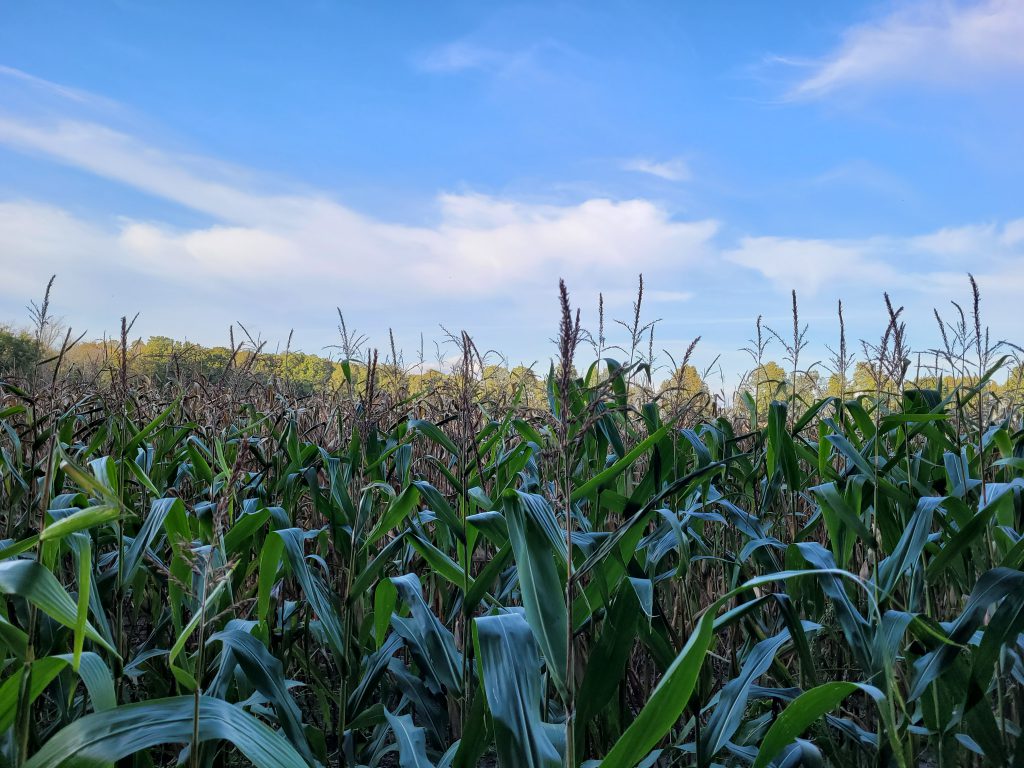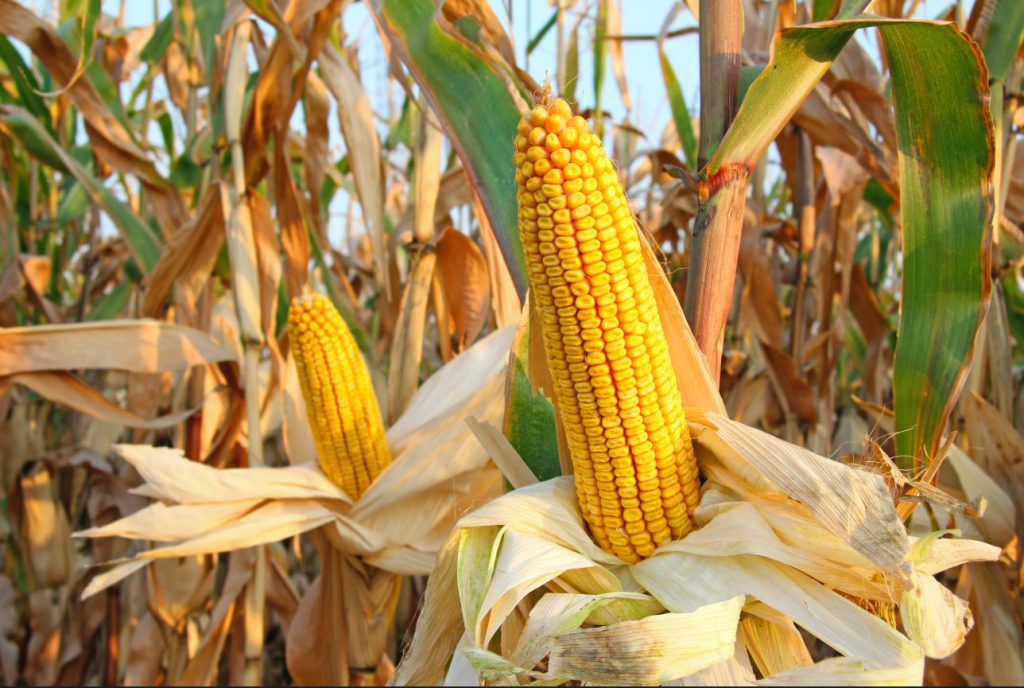An update from the field: October 2021 edition

Over the spring and summer months Ontario’s grain farmers were hard at work planting crops, checking for unwanted visitors in their fields, tilling up their land and performing the many tasks that are necessary to ensure that they are producing safe and healthy grains for our use.
As the leaves continue to change colour and we get deeper into the fall months, Ontario’s grain farmers are working on harvesting soybeans and grain corn.
I sat down with Grain Farmers of Ontario’s chair, Brendan Byrne, to discuss how the crops have been turning out so far, what farmers will be up to in the coming months and more.
As of writing, Wellington County has approximately 80% of their soybean fields harvested. In contrast, Byrne states that soybean harvested has only just begun in Essex County, there have only been 20 to 50% of the fields that have been harvested. There are even a few farmers across the province that are done harvesting soybeans and have moved to harvesting corn.
Across the province, it can be estimated that 75% of the soybean harvest is complete, rains have been delaying an otherwise early harvest season. There were some periods of heavy rain that delayed harvest for a while; farmers must wait until their fields are dry and soybeans have relatively low moisture levels before they can harvest them to make sure that the soybeans are of top quality. Because of the high volume of rain that was seen by many parts of Ontario in September and other factors, the soybean yield (the number of soybeans per acre) will not be as high as many of those working in agriculture would like to have seen, says Byrne.

Grain corn has started to be harvested in a few parts of the province, but the majority of corn harvest won’t start until around the middle of October if the weather cooperates. Byrne states that from what he has seen, that the corn crop looks to be decent. Ontario grain farmers have also been hard at work in late September and early October planting their winter wheat crop, click here to learn more about winter wheat and why it is planted in the fall.
Speaking from personal experience, you may notice that some parts of Ontario experience different weather than others, it could be cool in one area and warm in another, it could be raining in one area but not in another. Byrne explains that this difference in weather throughout Ontario is the reason for differing harvest times throughout the province. Byrne is from Essex County and explains that Essex is the region in Ontario with the longest growing season, meaning that on average, they harvest their crops later than other grain farmers in the province. Farmers in Essex could be harvesting their corn by as late as December!
Byrne states that the first soybeans he knew of some areas that were finished harvesting their soybeans by mid-September, whereas there are still some areas in Ontario that will be wrapping up harvest by mid-October. Byrne states that there has even been some corn that has been harvested, however, this is rare and for the most part corn harvest has yet to begin for the majority of Ontario’s grain farmers. When companies are in need of corn prior to the start of corn harvest, companies will pay farmers a bonus to harvest their corn, even if the corn is a little bit wet in the hopes that companies will replenish their corn stock, says Byrne.
Corn harvest wraps up in the next month and the snow begins to fall, Ontario grain farmers will begin to change their focus. Byrne tells us that during the winter months many grain farmers will be working their other jobs that are off-farm, they will be educating themselves on the newest in farming technologies and strategies, and they will start planning for next spring. Click here to learn more about what farmers do in the winter.
A final note that Byrne reminds us all is that “we (farmers) aren’t on the road all year, so [during harvest times] when you come across a large piece of farming equipment on the road, be patient cognizant”… “we don’t like to be on the road any longer than we have to either so we ask for a little bit of patience and safety.” Check out these two resources on road safety with farm equipment, to help us all get home safely.



